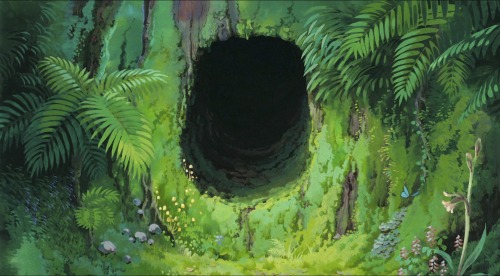Katie - Champ De Mars, Paris

Katie - Champ de Mars, Paris
Follow the Ballerina Project on Facebook, Instagram, YouTube, Twitter & Pinterest
For information on purchasing Ballerina Project limited edition prints.
More Posts from Smparticle2 and Others




Scientists report the first scientific results from NASA’s Juno mission, now in orbit around Jupiter.
This week, a suite of 46 separate scientific papers describe different aspects of the giant planet Jupiter, from its massive polar cyclones, to its complex magnetic field, to its unique radiation environment. The papers mark the first full scientific results from NASA’s Juno mission, which arrived in orbit around Jupiter last summer. Later this July, the craft is slated to overfly the planet’s Great Red Spot, bringing back still more data. Juno program scientist Jared Espley and Juno radiation monitoring investigation lead Heidi Becker join Ira to sum up some of the Jovian surprises, as well as give a preview of what still lies ahead for the Juno mission. Listen here to learn more.
[Photos by NASA/JPL/MSSS/Gerald Eichstädt/Justin Cowart/Alexis Tranchandon/Solaris]

Warrior of the grassland - Anup Deodhar - The Comedy Wildlife.
All these beautiful scenes and all I could think was "LOOK AT ALL THE SCATTERING" :')










More Art of My Neighbor Totoro - Art Direction by Kazuo Oga (1988)


“You know, we’ve always had been nerds. I was a nerd in high school. I was like… I didn’t get beat up, I was invisible.”

Nardia - Central Park, New York City
Follow the Ballerina Project on Facebook, Instagram, YouTube, Twitter & Pinterest
For information on purchasing Ballerina Project limited edition prints.
Outfit by @blackmilkclothing Black Milk Clothing

How do you build a metal nanoparticle?
Novel theory explains how metal nanoparticles form
Although scientists have for decades been able to synthesize nanoparticles in the lab, the process is mostly trial and error, and how the formation actually takes place is obscure. However, a study recently published in Nature Communications by chemical engineers at the University of Pittsburgh’s Swanson School of Engineering explains how metal nanoparticles form.
“Thermodynamic Stability of Ligand-Protected Metal Nanoclusters” (DOI: 10.1038/ncomms15988) was co-authored by Giannis Mpourmpakis, assistant professor of chemical and petroleum engineering, and PhD candidate Michael G. Taylor. The research, completed in Mpourmpakis’ Computer-Aided Nano and Energy Lab (C.A.N.E.LA.), is funded through a National Science Foundation CAREER award and bridges previous research focused on designing nanoparticles for catalytic applications.
“Even though there is extensive research into metal nanoparticle synthesis, there really isn’t a rational explanation why a nanoparticle is formed,” Dr. Mpourmpakis said. “We wanted to investigate not just the catalytic applications of nanoparticles, but to make a step further and understand nanoparticle stability and formation. This new thermodynamic stability theory explains why ligand-protected metal nanoclusters are stabilized at specific sizes.”
Read more.

Entering the house owned by a friend working in the private sector, the grad student anxiously reassesses many of his life choices.











(Image caption: Brain showing hallmarks of Alzheimer’s disease (plaques in blue). Credit: ZEISS Microscopy)
New imaging technique measures toxicity of proteins associated with Alzheimer’s and Parkinson’s diseases
Researchers have developed a new imaging technique that makes it possible to study why proteins associated with Alzheimer’s and Parkinson’s diseases may go from harmless to toxic. The technique uses a technology called multi-dimensional super-resolution imaging that makes it possible to observe changes in the surfaces of individual protein molecules as they clump together. The tool may allow researchers to pinpoint how proteins misfold and eventually become toxic to nerve cells in the brain, which could aid in the development of treatments for these devastating diseases.
The researchers, from the University of Cambridge, have studied how a phenomenon called hydrophobicity (lack of affinity for water) in the proteins amyloid-beta and alpha synuclein – which are associated with Alzheimer’s and Parkinson’s respectively – changes as they stick together. It had been hypothesised that there was a link between the hydrophobicity and toxicity of these proteins, but this is the first time it has been possible to image hydrophobicity at such high resolution. Details are reported in the journal Nature Communications.
“These proteins start out in a relatively harmless form, but when they clump together, something important changes,” said Dr Steven Lee from Cambridge’s Department of Chemistry, the study’s senior author. “But using conventional imaging techniques, it hasn’t been possible to see what’s going on at the molecular level.”
In neurodegenerative diseases such as Alzheimer’s and Parkinson’s, naturally-occurring proteins fold into the wrong shape and clump together into filament-like structures known as amyloid fibrils and smaller, highly toxic clusters known as oligomers which are thought to damage or kill neurons, however the exact mechanism remains unknown.
For the past two decades, researchers have been attempting to develop treatments which stop the proliferation of these clusters in the brain, but before any such treatment can be developed, there first needs to be a precise understanding of how oligomers form and why.
“There’s something special about oligomers, and we want to know what it is,” said Lee. “We’ve developed new tools that will help us answer these questions.”
When using conventional microscopy techniques, physics makes it impossible to zoom in past a certain point. Essentially, there is an innate blurriness to light, so anything below a certain size will appear as a blurry blob when viewed through an optical microscope, simply because light waves spread when they are focused on such a tiny spot. Amyloid fibrils and oligomers are smaller than this limit so it’s very difficult to directly visualise what is going on.
However, new super-resolution techniques, which are 10 to 20 times better than optical microscopes, have allowed researchers to get around these limitations and view biological and chemical processes at the nanoscale.
Lee and his colleagues have taken super-resolution techniques one step further, and are now able to not only determine the location of a molecule, but also the environmental properties of single molecules simultaneously.
Using their technique, known as sPAINT (spectrally-resolved points accumulation for imaging in nanoscale topography), the researchers used a dye molecule to map the hydrophobicity of amyloid fibrils and oligomers implicated in neurodegenerative diseases. The sPAINT technique is easy to implement, only requiring the addition of a single transmission diffraction gradient onto a super-resolution microscope. According to the researchers, the ability to map hydrophobicity at the nanoscale could be used to understand other biological processes in future.
-
 manuelgpslopes liked this · 7 years ago
manuelgpslopes liked this · 7 years ago -
 pauli480 liked this · 7 years ago
pauli480 liked this · 7 years ago -
 skinnyblackfilms liked this · 8 years ago
skinnyblackfilms liked this · 8 years ago -
 devanteparson liked this · 8 years ago
devanteparson liked this · 8 years ago -
 danceandloveandlive reblogged this · 8 years ago
danceandloveandlive reblogged this · 8 years ago -
 darknight-11 liked this · 8 years ago
darknight-11 liked this · 8 years ago -
 afatherslove78 liked this · 8 years ago
afatherslove78 liked this · 8 years ago -
 pnkflffyncorn-blog reblogged this · 8 years ago
pnkflffyncorn-blog reblogged this · 8 years ago -
 justinepratico-blog liked this · 8 years ago
justinepratico-blog liked this · 8 years ago -
 borogodo reblogged this · 8 years ago
borogodo reblogged this · 8 years ago -
 everyelixir reblogged this · 8 years ago
everyelixir reblogged this · 8 years ago -
 kubinyi-an liked this · 8 years ago
kubinyi-an liked this · 8 years ago -
 sydneybelleee19-blog reblogged this · 8 years ago
sydneybelleee19-blog reblogged this · 8 years ago -
 gemmapz-blog liked this · 8 years ago
gemmapz-blog liked this · 8 years ago -
 armematt792 liked this · 8 years ago
armematt792 liked this · 8 years ago -
 3204585021-blog liked this · 8 years ago
3204585021-blog liked this · 8 years ago -
 notverygosu reblogged this · 8 years ago
notverygosu reblogged this · 8 years ago -
 hypocriticalvirgo reblogged this · 8 years ago
hypocriticalvirgo reblogged this · 8 years ago -
 aliento-s reblogged this · 8 years ago
aliento-s reblogged this · 8 years ago -
 ethereal-state-of-the-mind reblogged this · 8 years ago
ethereal-state-of-the-mind reblogged this · 8 years ago -
 madison-breaux13 reblogged this · 8 years ago
madison-breaux13 reblogged this · 8 years ago -
 toutesleschoseschichs reblogged this · 8 years ago
toutesleschoseschichs reblogged this · 8 years ago -
 iturtletalker liked this · 8 years ago
iturtletalker liked this · 8 years ago -
 captainmewis reblogged this · 8 years ago
captainmewis reblogged this · 8 years ago -
 la-serendipite-blog reblogged this · 8 years ago
la-serendipite-blog reblogged this · 8 years ago -
 magnanimouslight reblogged this · 8 years ago
magnanimouslight reblogged this · 8 years ago -
 itsarecipefordisaster reblogged this · 8 years ago
itsarecipefordisaster reblogged this · 8 years ago -
 laurenjschilling reblogged this · 8 years ago
laurenjschilling reblogged this · 8 years ago